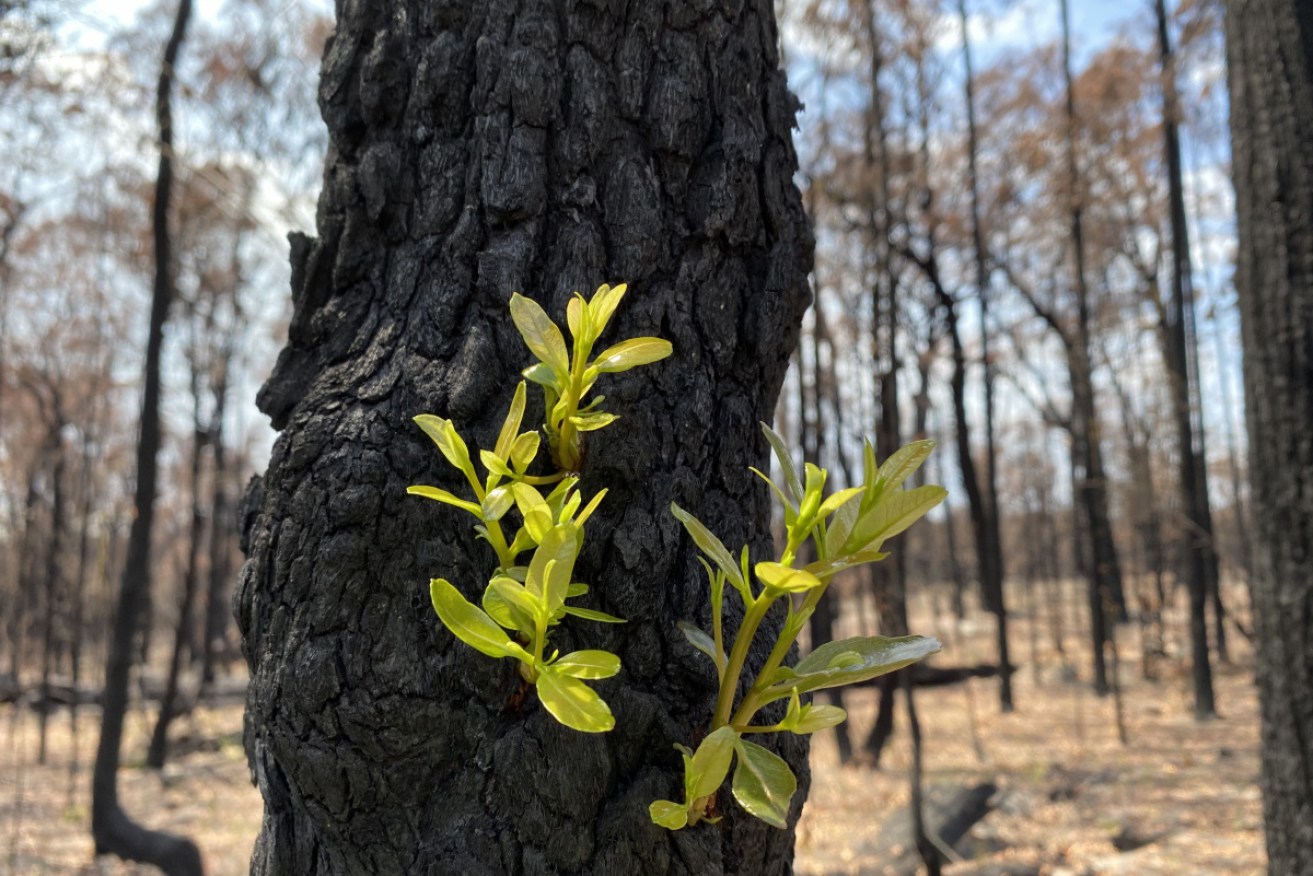Burnt plants in bushfire-hit areas already showing signs of regrowth


Fresh shoots have been spotted at Croajingolong National Park in East Gippsland. Photo: Parks Victoria
Green shoots emerging from scorched plants in bushfire-ravaged parts of Victoria have provided a glimmer of hope after months of devastation.
In December and January, out-of-control bushfires ripped through East Gippsland and north-east Victoria, wiping out hundreds of properties and destroying 1.2 million hectares of bushland.
The ferocious flames burnt more rainforest in Victoria than any fire in recent history.
And unlike other Australian plants that are well adapted to fire, rainforests take a long time to bounce back.
Towering eucalypts, tree ferns, creeping ground covers and flowering shrubs were all burnt in the bushfires, leaving dozens of threatened species without protection or food.
While the danger is far from over, early signs of regeneration have been a welcome relief after a summer of bad news.
So far, regrowth has been spotted in native plants like eucalypts and banksias, known for their ability to withstand bushfires.

Banksia seed pods have started to open at Cape Conran on Victoria’s east coast. Photo: Parks Victoria
Some of them have a swelling at the base of the stem just below the soil that contains dormant buds and a back-up supply of food, called a lignotuber.
When the plant is burnt, the lignotuber kickstarts into repair mode and quickly develops new shoots in a process called epicormic growth.
Eucalypts are some of the most successful re-sprouters in the world because their buds are very protected, often by bark.
Other eucalyptus species will drop seeds into the bed of ash where they will grow.
The first flowering season is a crucial stage of the ecosystem’s recovery.
That’s because new plants will attract insects like native bees and wasps, which will attract birds.
Those birds will then attract other wildlife.
Early signs of recovery
Bushfires are nothing new in Australia and many native plants have learned to adapt to them over time.
Some species even need fire to flourish.
Tree ferns: New shoots from tree ferns are often one of the first signs of lush green in a burnt area.

Tree ferns at Cape Conran have already started to regrow. Photo: Parks Victoria
Epicormic regrowth: The appearance of leaves sprouting up the trunks of different kinds of eucalypts is known as ‘epicormic regrowth’.
Grass trees: Large grass trees can be spotted covered in green patches of regrowth after a fire.

Some trees are known to respond to bushfires by flowering profusely. Photo: Parks Victoria
Banksias: Banksias have thick cones that protect seeds during fire. The ‘open mouths’ of the seed chamber on the woody cones show that the heat of the fire has triggered the release of seeds.
Bush-peas and wattles: Bush-peas and wattles have hard-coated, soil-stored seeds that are cracked by fire. It only takes a little bit of rain to create a mass germination of wattles and peas.
Parks Victoria’s manager of science and management effectiveness Mark Antos said it was hard to predict exactly how bushland will recover from fires, and when.
“The way the environment recovers from fire is a complex process with many variables,” Mr Antos said.
“Weather will have a huge impact on the speed of plants’ recovery – good steady rainfall will speed the comeback of many plants, whereas torrential rain that washes away topsoil, or extended dry will make the recovery slower.”
Mr Antos also said the intensity of bushfires in an area would affect the speed at which plants recovered, if at all.
“Some will provide spectacular displays, whereas other species may never recover,” he said.








